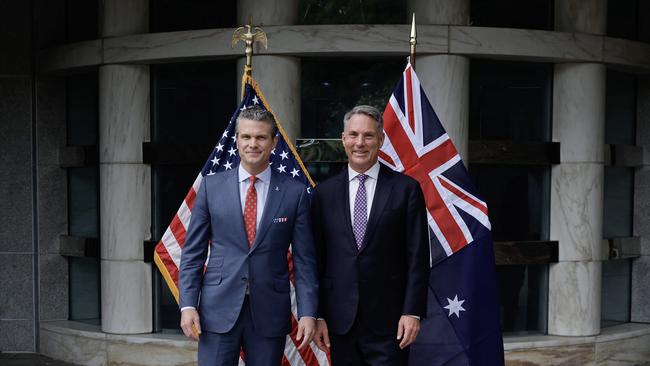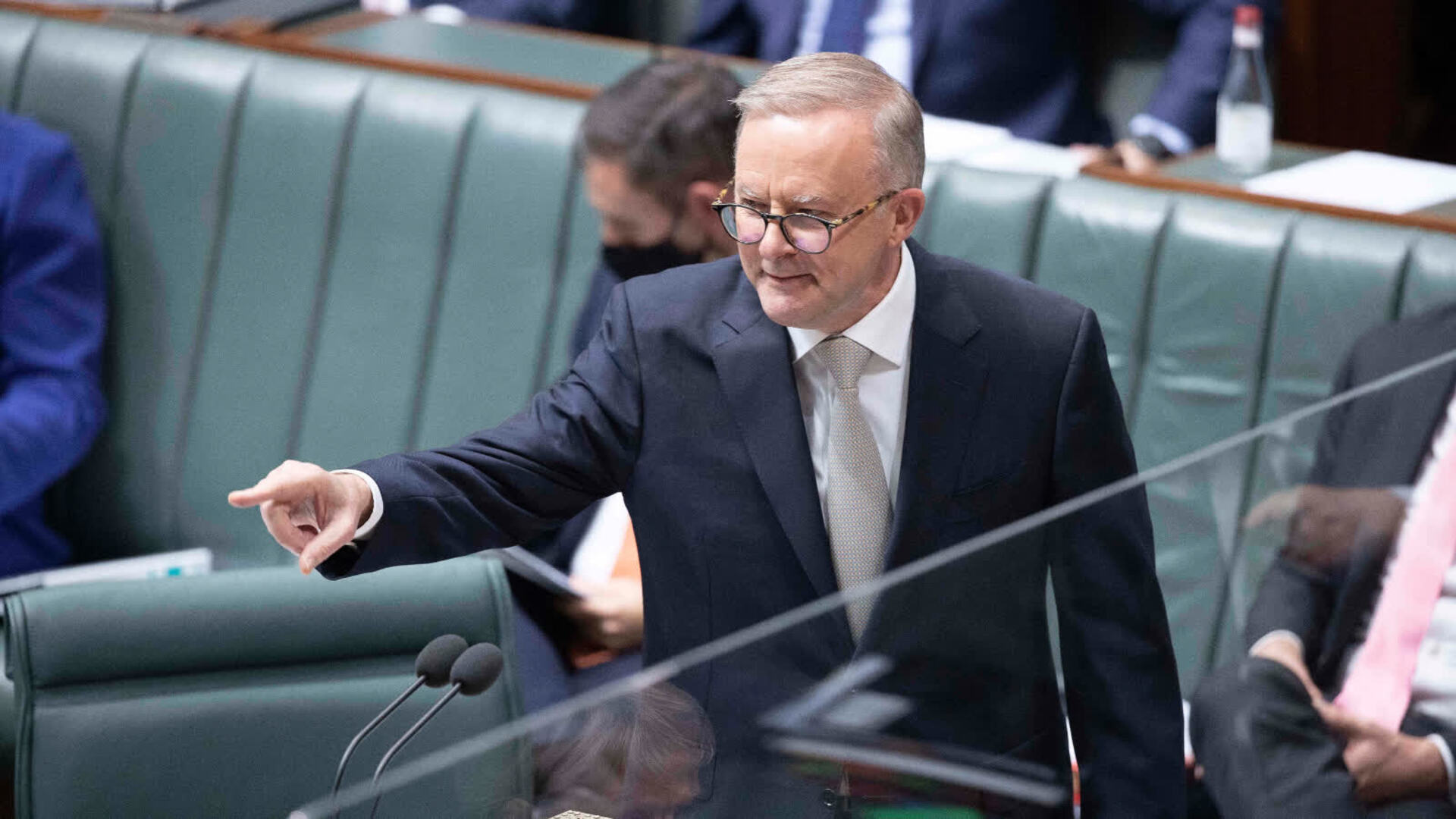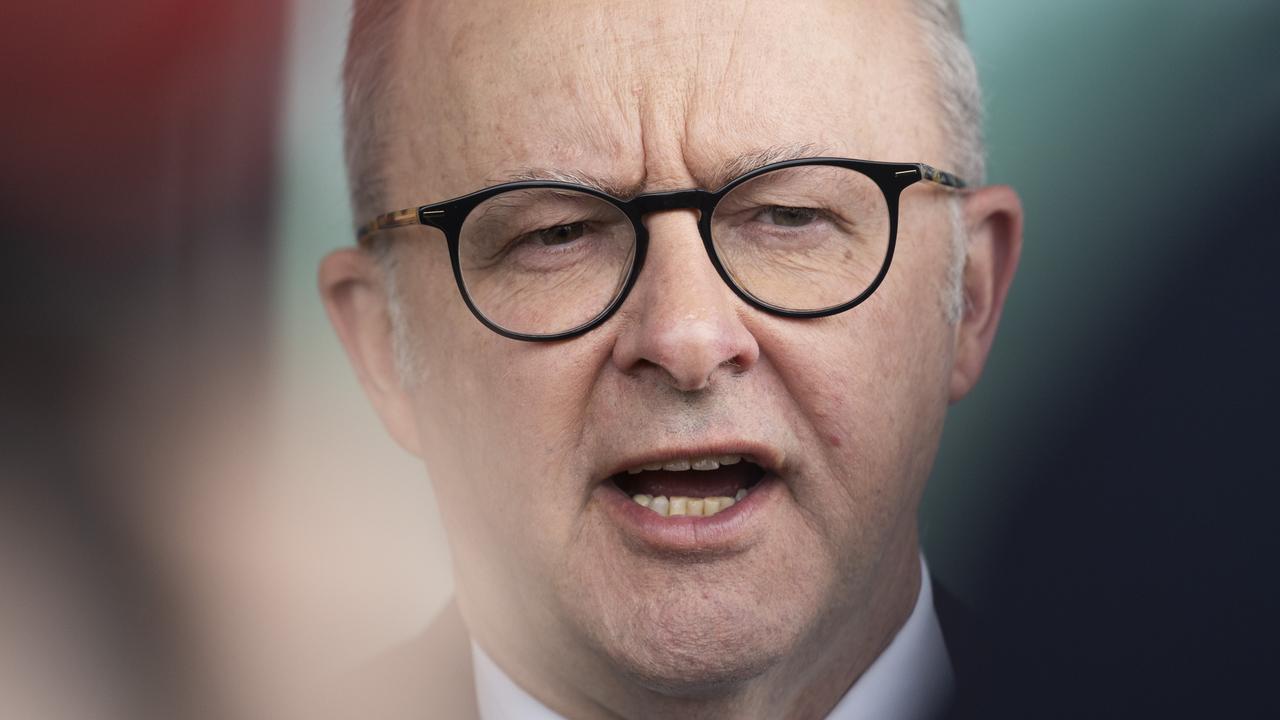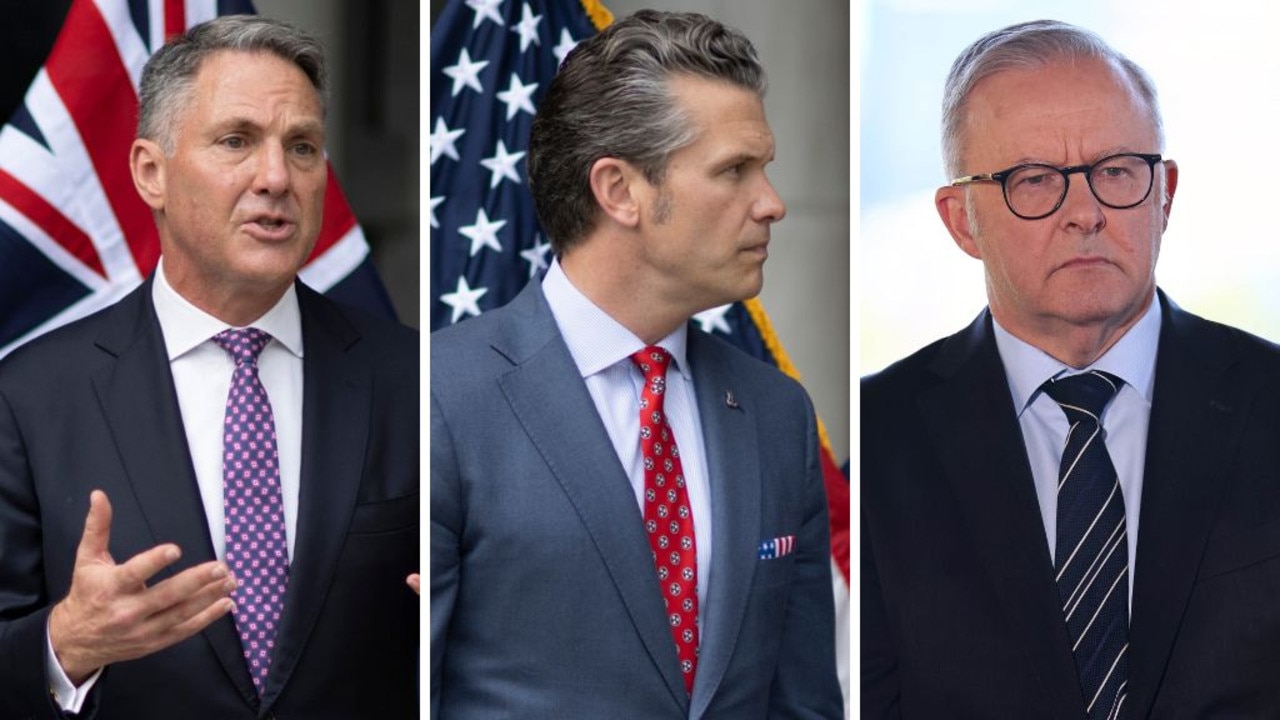US asked Australia to lift defence spending to 3.5 per cent of GDP
The request made on the sidelines of the Shangri La dialogue in Singapore is a major increase on the current levels of defence spending.

Australia has been asked to lift defence spending to 3.5 per cent of GDP “as soon as possible,” with the request being relayed directly from US Defence Secretary Pete Hegseth to Deputy Prime Minister Richard Marles on the sidelines of the Shangri La Dialogue in Singapore.
This is a major increase on the current levels of defence spending and would require the government to pour many tens of billions of extra money into the defence budget.
It is also a significant step-up on the three per cent of GDP that US Under Secretary of Defence for Policy, Elbridge Colby, had signalled was needed in his nomination hearing in March.
The American readout of the meeting between Mr Hegseth and Mr Marles, who is also the Australian Defence Minister, stated that the two men “discussed aligning investment to the security environment in the Indo-Pacific, accelerating US force posture initiatives in Australia, advancing defence industrial base co-operation, and creating supply chain resilience.”
However, it also noted that, “on defence spending, Secretary Hegseth conveyed that Australia should increase its defence spending to 3.5 per cent of its GDP as soon as possible.”
The US is pushing its allies and partners across the world to contribute more to their own defence rather than seeking to free ride on the American defence shield and nuclear umbrella.
Mr Marles previously acknowledged that Mr Hegseth had urged Australia to increase defence spending following their meeting late last week. But he did not disclose the exact increase requested by his US counterpart.

“On Friday, in our bilateral meeting, Secretary Hegseth did raise the question of increased defence expenditure on the Australian side,” Mr Marles said on Sunday. “Of course, we have already engaged in the last couple of years in the single biggest peace time increase in defence expenditure in Australia’s history. So we are beginning this journey.”
“We will continue to have the conversation with the United States, and we understand and we’re up for it.”
However, Mr Albanese provided a different message on Sunday. Asked about whether Australia would increase defence spending to 3 per cent - a figure less than the 3.5 per cent requested by Mr Hegseth - the Prime Minister said: “What we’ll do is we’ll determine our defence policy. And we’ve invested just across the forwards, an additional $10 billion in defence.”
“What we’ll do is continue to do is continue to provide for investing in our capability but also investing in our relationships in the region.”
Mr Albanese is expected to meet with Donald Trump on the sidelines of the G7 summit, hosted by Canadian Prime Minister Mark Carney from June 15-17, where he may be asked directly to lift defence spending as a percentage of GDP to the new 3.5 per cent threshold nominated by Mr Hegseth.
Professor of International Security and Intelligence Studies at ANU, John Blaxland, told The Australian the demand presented a “bit of a challenge” for Mr Albanese to “actually navigate these very tricky shoals between the domestic imperative not to be seen to be too supportive of Trump’s initiatives because of the left of the Labor Party and the concerns there and, at the same time, to be sufficiently supportive of the US alliance and the US ambitions for Asia that it keeps the United States sufficiently satisfied.”
“It’s the goldilocks solution if you like - to look like you are not caving. But, in the White House, you look like you are a team player.”

Professor Blaxland suspected it would be untenable for the government to do nothing and would likely need make a consequential defence announcement at the time of Mr Albanese’s meeting with Mr Trump.
“They are going to have to look like they are going further than they would have,” he said.
He suggested the government might be considering putting another “half a billion on the table for AUKUS and perhaps (doing) more on critical minerals.”
“Perhaps additional business investment in the United States and perhaps some more money up front on Australian defence. That’s going to be challenging for him (Mr Albanese) to pull off.”
Strategic Analysis Australia director Peter Jennings, a former Defence Department deputy secretary, said that the US President would likely “press Albanese to lift defence spending”.
“Defence spending is currently 2.05 per cent of gross domestic product, on a languid path to reach 2.4 per cent in eight years,” he said. “No one outside of government (and in fact, not many inside government) believes that is an adequate response to our strategic situation.”
In the Pentagon readout of the meeting between Mr Hegseth and Mr Marles, the US “welcomed the conclusion of the Precision Strike Missile (PrSM) Memorandum of Understanding on Production, Sustainment, and Follow-On Development – the Department’s first long range fire co-operation on foreign soil.”
It also said that Mr Hegseth looked “forward to continuing to work with DPM Marles to maintain peace through strength in the Indo-Pacific.”
In his speech to the Shangri-La Dialogue, Mr Hegseth said the Indo-Pacific was America’s “priority theatre” and that the US would work with allies and our partners to “preserve the global and regional peace that we all hold dear.”
He said the US position in the region would be underpinned by the restoration of the warrior ethos, a dedicated effort to rebuild the American military and an urgent mission to re-establish deterrence.
“We are reorienting toward deterring aggression by Communist China,” he said. “Here in the Indo-Pacific, our futures are bound together ... And we are here to stay.”
While the US did not seek a conflict with Beijing, Mr Hegseth said that “China’s behaviour towards its neighbours and the world is a wake-up call. And an urgent one.”
China was “credibly preparing to potentially use military force to alter the balance of power in the Indo-Pacific. We know. It’s public that Xi has ordered his military to be capable of invading Taiwan by 2027.”
He said that “if deterrence fails, and if called upon by my Commander in Chief, we are prepared to do what the Department of Defence does best – fight and win — decisively.”
Mr Hegseth said that America’s allies in Asia should now “look to countries in Europe as a new-found example” on defence spending.
”NATO members are pledging to spend 5 per cent of their GDP on defence, even Germany. So it doesn’t make sense for countries in Europe to do that while key allies in Asia spend less on defence in the face of an even more formidable threat,” he said.
“I urge all our allies and partners to seize this moment with us. Our defence spending must reflect the dangers and threats that we face today. Because deterrence doesn’t come on the cheap, just ask the American taxpayer.”
A recent report by the Australian Strategic Policy Institute on the “Cost of Defence” found that Labor’s “business as usual” defence budget was hollowing out the force, leaving it with limited munitions stockpiles and a shortage of critical capabilities including missile defence systems and long-range weapons.
The recent budget left defence spending hovering at about 2 per cent of GDP, with the ASPI report saying the “slow pace” of procuring key systems “risks leaving the ADF ill-prepared for current threats and unable to keep pace with future challenges, creating a ‘no man’s land’ of preparedness”.
It said other Indo-Pacific nations were rearming “much faster than us”.




To join the conversation, please log in. Don't have an account? Register
Join the conversation, you are commenting as Logout